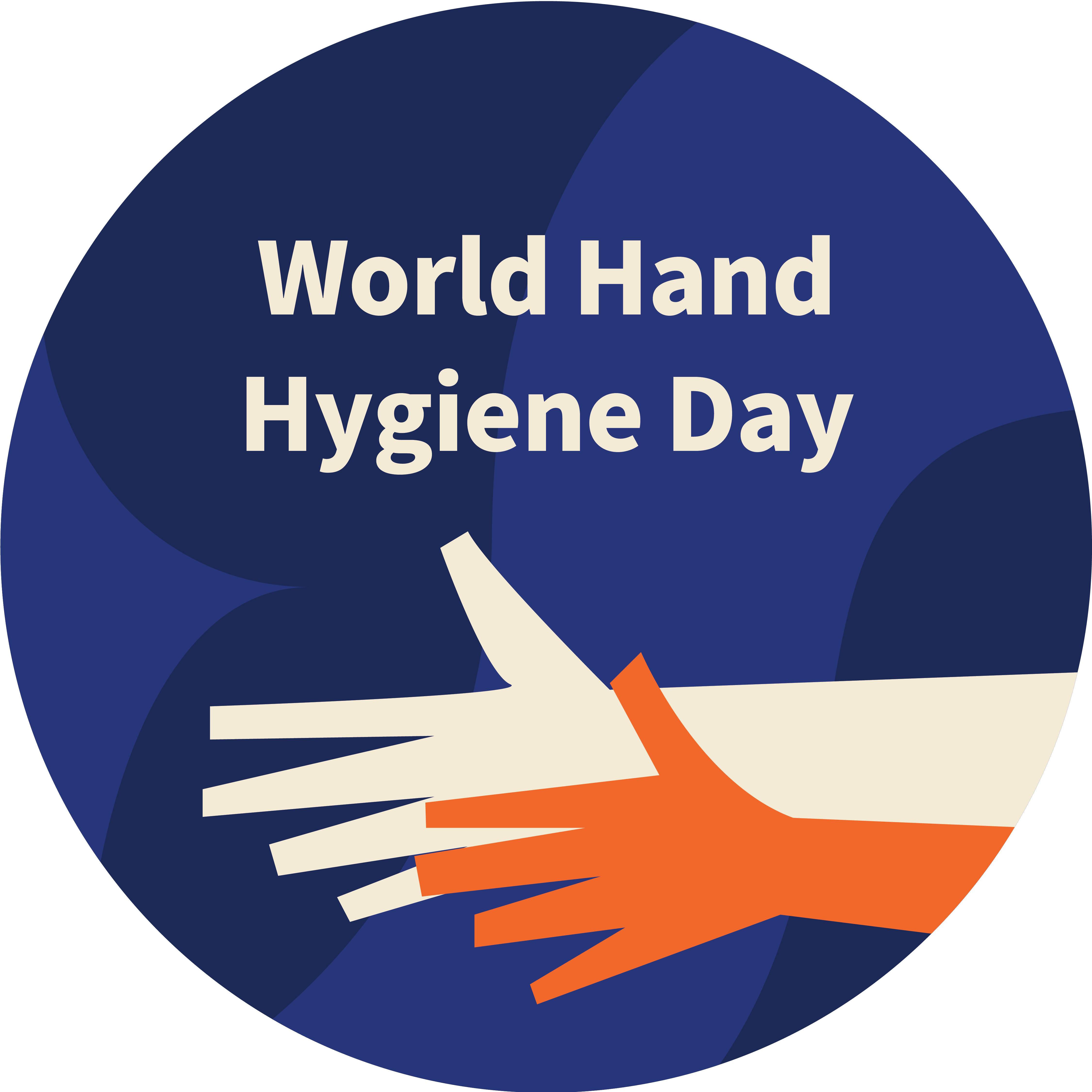Hand hygiene practices in extreme resource limited situations: an integrative review of the literature
DOI:
https://doi.org/10.3396/ijic.v18.21586Keywords:
Hand hygiene, hand disinfection, hand washing, infection control, hand sanitiser, health resourcesAbstract
As the COVID-19 pandemic affects more than one hundred million people, worldwide prevention measures, particularly hand hygiene (HH), are crucial to control and limit spread of disease. Yet access to clean water and soap or hand sanitiser may be scarce or unattainable in some situations. This integrative review, based on the framework of Whittemore and Knafl and the quality assessment performed in-line with the Mixed Methods Assessment Tool, aims to identify alternative HH agents and water sources that have demonstrated some efficacy in extreme resource limited situations. Four articles met inclusion criteria, with agents that create friction and repurposed water identified as alternatives to soap and water or hand sanitiser, resulting in reduced microbial load. Sand combined with repurposed cooking water, for example, can be used as an alternate HH measure in extreme resource limitations. Long term effects on skin integrity, compliance, and sustainability of these strategies must be considered.
Downloads
References
World Health Organization. Recommendations to Member States to improve hand hygiene practices to help prevent the transmission of the COVID-19 virus: Interim Guidance April 1 2020. Geneva: World Health Organization; 2020. https://www.who.int/publications/i/item/recommendations-to-member-states-to-improve-hand-hygiene-practices-to-help-prevent-the-transmission-of-the-covid-19-virus [Accessed 21 July, 2021].
World Health Organization. Responding to community spread of COVID-19: Interim guidance 7 March 2020. Geneva: World Health Organization; 2020. https://apps.who.int/iris/handle/10665/331421 [Accessed 21 July, 2021].
Pittet D, Allegranzi B, Boyce J. The World Health Organization guidelines on hand hygiene in health care and their consensus recommendations. Infect Control Hosp Epidemiol 2009; 30: 611–622.
World Health Organization, UNICEF. Progress on drinking water, sanitation, and hygiene, 2000–2017. Special focus on inequalities. New York: United Nations Children’s Fund and World Health Organization; 2019. https://data.unicef.org/resources/progress-drinking-water-sanitation-hygiene-2019/ [Accessed 21 July, 2021].
Whittemore R, Knafl K. The integrative review: updated methodology. J Adv Nurs 2005; 52: 546–553.
Huang X, Lin J, Demner-Fushman D. Evaluation of PICO as a knowledge representation for clinical questions. AMIA Ann Symp Proc 2006; 359–363.
Moher D, Liberati A, Tetzlaff J, Altman DG, for the PRISMA Group. Preferred reporting items for systematic reviews and meta-analyses: the PRISMA statement. PLoS Med 2009; 6: 338:b2535.
Hong QN, P P, Fabregegues S, et al. Mixed Methods Appraisal Tool (MMAT) version 2018. Registration of Copyright (#1148552) ed. Canada: Canadian Intellectual Property Office, Industry Canada.; 2018.
Hoque BA, Mahalanabis D, Alam MJ, Islam MS. Post-defecation handwashing in Bangladesh: practice and efficiency perspectives. Public Health 1995; 109: 15–24.
Edmonds SL, Zapka C, Kasper D, et al. Effectiveness of hand hygiene for removal of Clostridium difficile spores from hands. Infect Control Hosp Epidemiol 2013; 34: 302–305.
Isaacson D, Haller B, Leslie H, Roemer M, Winston L. Novel handwashes are superior to soap and water in removal of Clostridium difficile spores from the hands. Am J Infect Control 2015; 43: 530–532.
Schürmann W, Eggers HJ. An experimental study on the epidemiology of enteroviruses: water and soap washing of poliovirus 1--contaminated hands, its effectiveness and kinetics. Med Microbiol Immunol 1985; 174: 221–236.
Miller T, Patrick D, Ormrod D. Hand decontamination: influence of common variables on hand-washing efficiency. Healthc Infect 2011; 16: 18–23.
Tuck JJH, Williams JR, Doyle AL. Gastro Enteritis in a military population deployed in West Africa in the UK Ebola response; was the observed lower disease burden due to handwashing? Travel Med Infect Dis 2016; 14: 131–136.
Wolfe MK, Gallandat K, Daniels K, Desmarais AM, Scheinman P, Lantagne D. Handwashing and Ebola virus disease outbreaks: A randomized comparison of soap, hand sanitizer, and 0.05% chlorine solutions on the inactivation and removal of model organisms Phi6 and E. coli from hands and persistence in rinse water. PloS ONE 2017; 12: e0172734.
Wolfe MK, Wells E, Mitro B, Desmarais AM, Scheinman P, Lantagne D. Seeking Clearer Recommendations for Hand Hygiene in Communities Facing Ebola: A Randomized Trial Investigating the Impact of Six Handwashing Methods on Skin Irritation and Dermatitis. PloS ONE 2016; 11: e0167378.
Baker KK, O’Reilly CE, Levine MM, et al. Sanitation and Hygiene-Specific Risk Factors for Moderate-to-Severe Diarrhea in Young Children in the Global Enteric Multicenter Study, 2007–2011: Case-Control Study. PLoS Med 2016; 13: 1–19.
Edward A, Jung Y, Chhorvann C, Ghee AE, Chege J. Association of mother’s handwashing practices and pediatric diarrhea: evidence from a multi-country study on community oriented interventions. J Prev Med Hyg 2019; 60: E93–E102.
Huda TMN, Unicomb L, Johnston RB, Halder AK, Yushuf Sharker MA, Luby SP. Interim evaluation of a large scale sanitation, hygiene and water improvement programme on childhood diarrhea and respiratory disease in rural Bangladesh. Soc Sci Med 2012; 75: 604–611.
Lohiniva AL, Saeed M, El-Sayeed N, Talaat M. Clean hands: prevention of typhoid fever in rural communities in Egypt. Int Q Community Health Educ 2007; 28: 215–227.
Ravindra K, Mor S, Pinnaka VL. Water uses, treatment, and sanitation practices in rural areas of Chandigarh and its relation with waterborne diseases. Environ Sci Poll Res Int 2019; 26: 19512–19522.
Ray SK, Dobe M, Lahiri A, Basu SS. Hand washing practices in urban and rural communities in and around Kolkata, West Bengal. Indian J Public Health 2009; 53: 192–195.
Hitomi S, Baba S, Yano H, Morisawa Y, Kimura S. Antimicrobial effects of electrolytic products of sodium chloride--comparative evaluation with sodium hypochlorite solution and efficacy in handwashing. Kansenshogaku Zasshi 1998; 72: 1176–1181.
World Health Organization. Regional Office for the Western Pacific. Considerations for community hand hygiene practices in low-resource situations. Manila: WHO Regional Office for the Western Pacific; 2020. https://apps.who.int/iris/handle/10665/332382 [Accessed 21 July, 2021].
World Health Organization Regional Office for the Western Pacific. Handwashing in low resource settings. Manila: WHO Regional Office for the Western Pacific; 2020. https://www.who.int/westernpacific/internal-publications-detail/handwashing-in-low-resource-settings [Accessed 21 July, 2021].
Patrick D, Miller TE, D O. Reduction of microbial transmission in childcare using an improved hand drying protocol. Healthc Infect 2010; 15: 15–19.
Published
How to Cite
Issue
Section
License
Authors retain copyright of their work, with first publication rights granted to IJIC. Read the full Copyright- and Licensing Statement.




